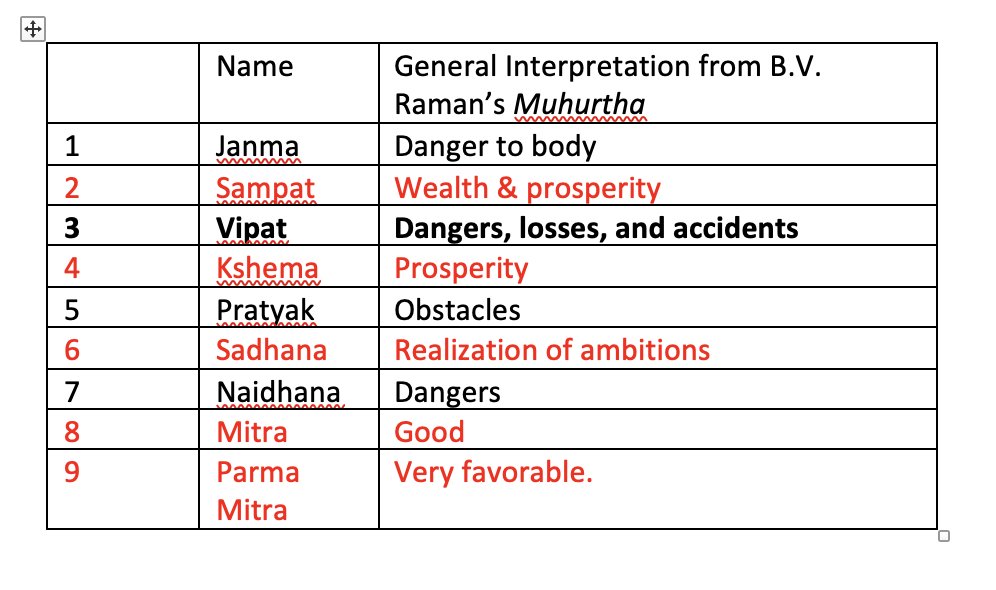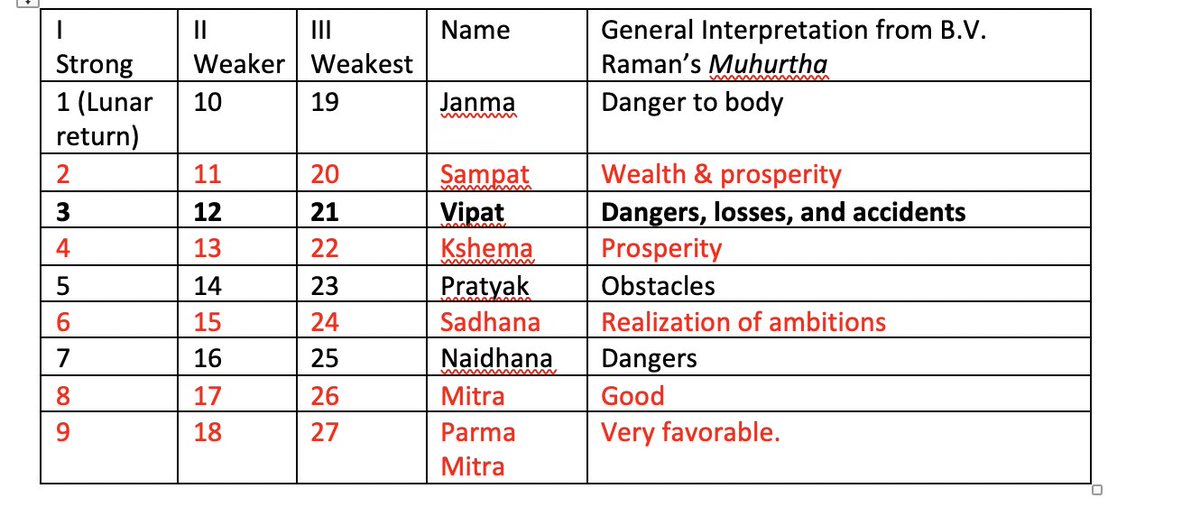1. Some days ago I talked about the Chandrabalam. Now I shall talk about the related concept of the Tarabalam.
https://twitter.com/edwardW2/status/1246630655917613057
Like">https://twitter.com/edwardW2/... the Chandrabalam, this is a method of determining how [in]auspicious a day is for a particular person.
https://twitter.com/edwardW2/status/1246630655917613057
Like">https://twitter.com/edwardW2/... the Chandrabalam, this is a method of determining how [in]auspicious a day is for a particular person.
2/ The difference between the Chandrabalam and the Tarabalam, is that the latter uses the Nakshatras, or 27 Lunar Mansions. In effect, This system assigns a nine-term cycle to all 27 Nakshatras based on your natal nakshatra.
3/ To calculate your Tarabalam for a particular moment, find the number of nakshatra-s between the natal naks., & the naks. the moon Is currently in. Divide this by9, and see the result in the table below. In brief, if the result is 1, 3 or 7, it is bad; anything else is good.
4.Since there are 27 nakshatras, it follows this nine-term cycle repeats itself thrice though the 27 nakshatras; each of these cycles is called a parva. This impacts how harmful a particular nakshatra is to you.
5/ In summary, the further away (counting forwards) a nakshatra is, the less bad it becomes.
- Inauspicious nakshatras in the 1st parva are very bad
-In the 2nd about half as bad
-In the 3rd, the badness is “almost negligible”
- Inauspicious nakshatras in the 1st parva are very bad
-In the 2nd about half as bad
-In the 3rd, the badness is “almost negligible”
6/ Interestingly, the books are don& #39;t say if the weakening of the bad naks. in the 2nd and 3rd Parvas also affects the good ones
The table below is a summary of the above.the numbers in the left-hand grid from 1 to 27 are the distance between the natal and current nakshatra.
The table below is a summary of the above.the numbers in the left-hand grid from 1 to 27 are the distance between the natal and current nakshatra.
7. My source has been B.V. Raman& #39;s Muhurta , available here: https://archive.org/details/muhurtabvraman_202002/page/n21/mode/2up">https://archive.org/details/m...
Raman calls this quantity the "birth star".
Raman calls this quantity the "birth star".

 Read on Twitter
Read on Twitter



